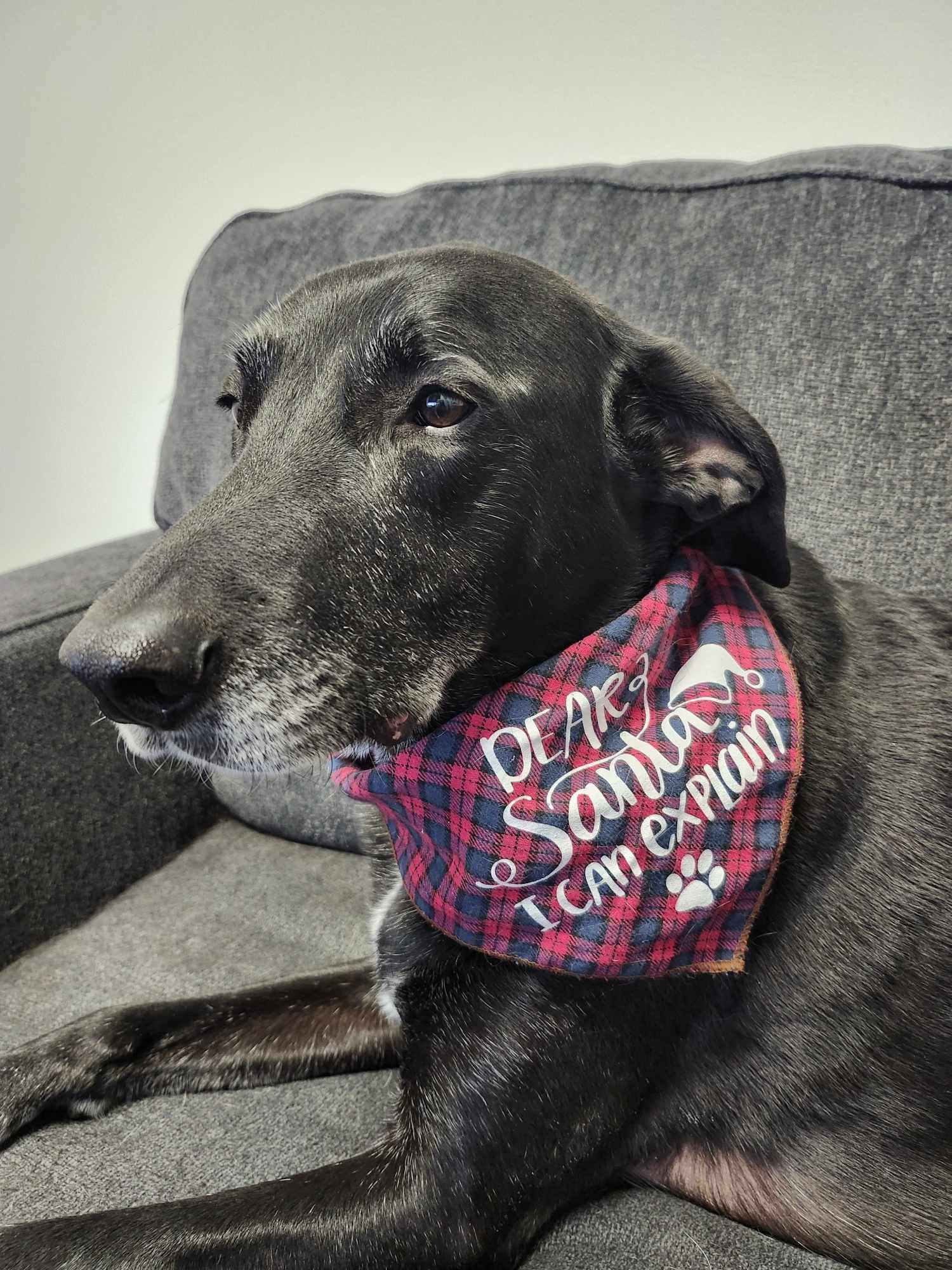Why I Believe in Co-Therapists With Four Legs
Charlie loves wearing bandanas, especially for the holidays!
I’ll be honest: when I first imagined my therapy practice, I didn’t plan on sharing the space with a 70-pound, tail-wagging co-therapist. I honestly didn’t even think it was an option. But now, I can’t imagine doing this work without him.
Charlie is my calm, affectionate Border Collie/Lab mix. Over time, he’s become more than just a comforting presence in the office—he’s become a quiet part of the healing process for many of my clients. Whether he’s resting on the couch or gently placing his head on someone’s lap during a tough moment, Charlie brings something to the therapy space that even the most skilled human can’t always offer: unconditional, wordless support.
The Science—and the Soul—of It
There’s actually a good deal of research behind why animals help us feel better. Studies show that the presence of a calm, friendly dog can lower heart rate and blood pressure, reduce cortisol (the stress hormone), and increase oxytocin (the connection hormone). Basically, dogs help regulate our nervous systems just by being near us.
But there’s more to it than the science. When Charlie is in the room, the energy shifts. He doesn’t need to say anything—he just is. He senses when someone needs closeness, and when they need space. He offers companionship without expectation, warmth without pressure. And in a space where people are often showing up with pain, vulnerability, or uncertainty, that presence can feel deeply healing.
What Charlie Brings That I Can’t
As a therapist, I work hard to create a space where people feel safe, seen, and respected. But Charlie has a magic of his own. He doesn’t worry about saying the right thing—he simply offers calm, grounded connection.
He’s intuitive in ways I’ll never fully understand however greatly appreciate. There have been moments when he’s quietly moved closer to a client just as they begin to tear up, resting his head on their knee like he knows exactly what’s happening. And other times, he’s sensed someone needs stillness, and he’ll lie quietly in the corner of the couch, just being nearby in case he is needed for a pet.
Clients often tell me that having him in the room helps them feel more at ease—especially during difficult conversations and trauma recovery work. For some, it’s easier to talk with a gentle dog nearby. For others, petting him becomes a form of self-regulation. And for many, his presence simply makes the therapy space feel more human as clients who love their furry friends at home like having one in the office.
Real Moments, Real Impact
Therapy is a very vulnerable place. The clients I serve put in tough work in order to achieve their goals. Without sharing any details, I can tell you: Charlie has been there for people in some of their hardest moments. He’s sat beside grief, anger, heartbreak, and anxiety—and never flinched.
That’s not to say he doesn’t sometimes look up at me with those eyes that say, “Mom, are they okay? What should I do?”—as if he’s waiting for his next cue.
There was a time when a client was overwhelmed with emotion—crying, struggling to find words. They were becoming visibly upset as they described a stressful incident.
Charlie, who had been sitting quietly beside them on the couch, jumped down and slowly walked over to rest against their feet. The client paused, noticing him. They realized that their raised voice was making Charlie concerned—not scared, just… tuned in.
In that moment, the client recognized Charlie’s gentle concern and used it as a cue to regulate. They began taking deep breaths, grounding themselves by petting him.
That’s the kind of quiet magic Charlie brings.
Charlie during a session taking a little siesta!
(picture was taken with client’s permission)
A Therapy Space That Feels More Like You
Charlie doesn’t “fix” anything, of course. But sometimes, healing doesn’t come from fixing. It comes from being held—by attention, by warmth, by presence. And Charlie offers all three, just by being himself.
Therapy doesn’t have to feel cold, clinical, or distant. It can feel warm, welcoming, and even a little furry. I believe in creating a space where people can show up exactly as they are—and where comfort can come in many forms.
So if you’re someone who could use a little extra grounding, or who feels a bit calmer in the presence of a four-legged friend, Charlie and I would love to welcome you.


